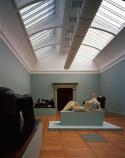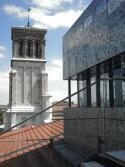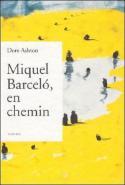Art Of The Day Weekly
#326 - from 12 December 2013 to 18 December 2013
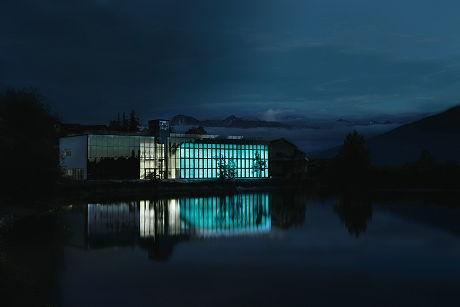
Fondation Pierre Arnaud, Photo Federico Berardi, 2013 (Lens, Valais, Switzerland)
IN THE AIR
New museums in Europe
The price to reconvert a five-star hotel in Paris can go past €200 million– as a few recent examples have shown. In order to renovate a museum in the French province a fraction of that price would suffice –about €23.5 million for Valence and hardly €800,000 for the museum of Beaux-Arts of Bordeaux. Who said culture was expensive? In December, when the rhythm of new exhibitions slows down for the Christmas break, museums are taking over. While the Louvre Lens celebrated its first birthday on 4 December with flying colors (900 000 visitors and the Equerre d'argent prize for the best building of the year), five new institutions – or which have undergone a complete renovation- will be opening their doors just a month from now. There is sufficient ancient art or Art nouveau, in town or in the countryside, to keep busy during the holiday season if the snow does not make its grand entry or if you want to stay away from all the holiday treats. Art is easily digested.
MUSEUMS
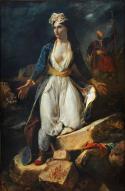
Eugène Delacroix, Greece on the ruins of Missolonghi, 1826, oil on canvas, 213x142 cm. Bought by the city in 1852 © Musée des Beaux-Arts, DGAC, Bordeaux
Bordeaux pampers Delacroix
BORDEAUX - Museums in the French province have a hard time competing with their Parisian counterparts to attract visitors. There has to be a special occasion–in this case the reopening to the public of the XIX and XX century collections – for us to become aware of the wealth of certain regional funds. The musée des Beaux-arts in Bordeaux was one of the recipients of the works the Louvre sent out to the regions, following the Chaptal decree in 1802. They welcomed a Titian (Tarquin and Lucretia), a Rubens, another by Pierre de Cortone… The loyalty of Bordeaux to the Bourbons and the generosity of local collectors helped the city receive other important collections, like that of Lacaze, Lodi Martin Duffour Dubergier, etc. During one’s visit we easily discover the unexpected number of “local” artists, such as Domergue, but especially Redon, Marquet, Lhote, Dupas. Even Delacroix who was not a native of Bordeaux saw it as a sort of “native town”. One of its master pieces, Greece under the ruins of Missolonghi, is visible once again. We await the temporary exhibition program to see whether the institution can define an identity as a destination over the long term …
• The musée des Beaux-Arts in Bordeaux will re-open to the public on 19 December 2013.
Brussels, an ode to fin de siècle
BRUSSELS - Its slogan that only exists in English –“Every end is a beginning” is too close to marketing brainstorming for comfort.… It is meant to sum up the influence of aesthetics of the end of the XIXth century on Belgian art. They represent a major period with an impressive concentration of talents, including Symbolist painters Khnopff and Spilliaert, the unclassifiable Ensor, as well as writers Maeterlinck and Verhaeren, the geniuses of Art nouveau Horta and Van de Velde. The former museum of modern art is still being transformed, four years after the opening of the musée Magritte.
• The Musée Fin-de-Siècle Museum opened on 6 December 2013.
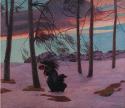
Carlo Fornara (1871-1968), Il vento d’Aquilone, 1902-1904, oil on canvas, 135 x 154 cm. Private collection.
The Arnaud foundation, a perfect frame for XIX century painting
LENS (Switzerland) - The Valais with its lakes, its mountain peaks and its wines. And its museums … After the Gianadda foundation, the fondation Pierre Arnaud, very near Crans-Montana, promises to be a new local attraction. This healthy competition is a tribute to a French businessman (1922-1996), born in Marseille, who was active in the Resistance, settled in Morocco before falling in love with the region where he set up Fotolabo, a flourishing company before the arrival of digital photography. The museum’s beautiful glass parallelepipe shape, designed by architect Jean-Pierre Emery, sits on the banks of lake Louché. It is a tribute to the collector and his passion, painting at the turn of the XXth century. A cycle of five exhibitions over five years starts with divisionism: Seurat and Signac, of course, as well as painters originally from the Alps such as Segantini, Giacometti father and Cuno Amiet. A second cycle, in the summer, explores the relations between Western art forms and others.
• The fondation Pierre Arnaud will open on 22 December 2013. The opening exhibition, Couleur maîtrisée ? couleur éclatée ? will run from 22 December 2013 to 22 April 2014.
Tate Britain, a return to the fundamentals
LONDON - The institution founded by the inventor of sugar cubes, Henry Tate (1819-1899), has become a true galaxy, right along Tate Modern, Tate Liverpool, Tate St Ives and the original nucleus, Tate Britain, that sits along the Thames. The latter has just had its impressive entrance refurbished and has been given a new communication area, a vertiginous spiral staircase designed by Caruso St John. The museum also started a new presentation of its collections since last May, based on the simplest principle, a chronology. This allows for unexpected rapprochements, such as an opposition between two facets of Victorian painting– solar and mythologic in Alma-Tadema’s work, somber and anchored in its time in Walter Sickert’s.
• The Tate Britain finished its renovation on 19 November 2013.
Valence, from prehistory to Alechinsky
VALENCE - Each museum in the French province has is strong point. The one in Valence, located in a former episcopal palace where it has been set up since 1911 and to which Jean-Paul Philippon and his team have just adjoined a modern building, the strength is Hubert Robert. The collections dedicated to the “painter of ruins” are the wealthiest in the world, with those of the Louvre and the Hermitage, and therefore logically wrap up the itinerary. Robert was not a native son, but collector Julien Victor Veyrenc, who left his paintings to the museum in 1836, was from nearby Marsanne. The museum also has, among its 20,000 pieces, an important fund dedicated to the first human traces (400,000 years B.C.) and to Antiquity, when Valence was the Roman Valentia, a vital crossroads, a little museum of natural history, paintings and drawings by Panini, Corot, Boudin, Dufy, Wols or Alechinsky. A true aesthetic of diversity…
• The Musée de Valence will reopen on 14 December 2013.
BOOKS
Barcelo seen from far
To put an artist in perspective is a difficult exercise and monographs of contemporary artists are often weak in this field. That is not at all the case here. To initiate us to Miquel Barceló, the author refers to a wise man from the middle ages, Raymond Lulle as well as to ethnologist Marcel Griaule or Strindberg, Byron, Dante, be it Blaise Cendrars: this accomplished writer, born in 1928, met the great globetrotter in New York. We can definitely say that the book is as much a study of the unclassifiable Catalan artist as a manifesto of a certain art critic. All the fundamentals are included, from the first exhibition Barceló saw in Paris at the age of 17( “Jean Paulhan through his painters”), the chapel of the cathedral in Palma, the anima shaped ceramics, the “dogon” drawings, the paintings overflowing with matter. But this lifelong friend of Clement Greenberg and Mark Rothko knows how to wrap up these chronological references in an impressive network of influences and parallels: even those who are unwilling to check out http://www.fondationpierrearnaud.ch Barceló will be satisfied by this intelligent and transversal journey …
• Miquel Barceló, en chemin by Dore Ashton, Actes Sud, 2013, 250 p., €35.

